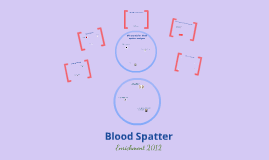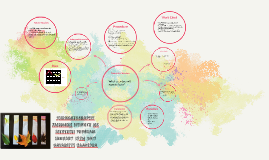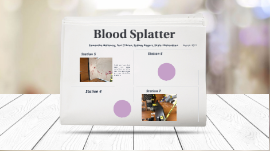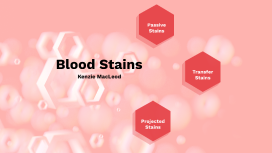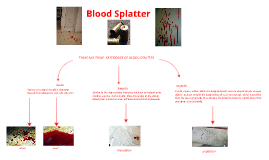Blood Splatter
Transcript: CHromatography Fairmont Heights hs Bitotech program January 13th 2017 Nayaritte Saavedra First piece of filter paper: First write any message at the edge of the paper IN PENCIL Poke a small hole in the middle of the paper Use marker(s) to place a small dots in a ring around the center This paper will become your chromatography. Second piece of filter paper: Fold the paper in half then in fourths lengthwise. Tear along folds, and discard outer sections. The two longer strips can be made into wicks. To make a wick, roll one of the longer strips, starting at the shorter end Insert this rolled wick into the round hole in your chromatography. The dish: Lay the chromatography over the dish so that it rests on the rim with the wick extending down into the water Watch the water enter the wick and travel out across your chromatography, carrying the ink as it travels. Note how some of the inks begin to separate into differently colored dyes. When the water nearly reaches the edge of your chromatography, remove it and place it somewhere clean and safe to dry. Discard the wick into the waste basket. Variables Materials 8 Filter Pieces 3 dark markers 3 light markers dish tap water pencil http://www.crayola.com/support/craft-safety.aspx https://www.khanacademy.org/test-prep/mcat/chemical-processes/separations-purifications/a/principles-of-chromatography http://www.juliantrubin.com/encyclopedia/forensicscience/paperchromatography.html The propose of this project is to understand the different pigments that make up a light or dark color. This project interests me due to the fact, I want to become a forensic pathologist. Some cases will have evidence that are stained and you would need to separate them. Work Cited Chromatography’ is an analytical technique commonly used for separating a mixture of chemical substances into its individual components, so that the individual components can be thoroughly analyzed several types of chromatography, each differing in the kind of stationary and mobile phase they use Many markers use different kind of ingredients. Such as eggs, peanuts and, latex. Background Information Hypothesis Conclusion Future Studies I would change the solutions to separate the dyes. I would love to work with blood spatter and measure it from different heights Forensics Science The piece of filter paper (11 cm) tap water Data If I separate dye from dark and light colors then darker colors will separates faster because darker colors have more color pigments. Independent Variable - The marker color Dependent Variable - base colors coming out In conclusion, my hypothesis was incorrect. Light colors separate faster than dark colors. In this experiment i found out that lighter colors have less, pigments towards them. Such as the color brown, brown has about 4 different colors including black, red, green and, blues. Purpose Which color dyes will separate faster? Procedure Constants






